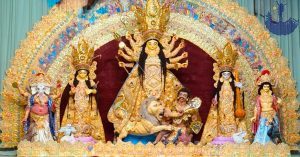Have you always wanted to try hiking but never knew where to start? Then, a trip to Chopta, Uttarakhand, could be your perfect gateway. Known as the ‘Mini Switzerland of India’, Chopta offers breathtaking landscapes and a beginner-friendly trekking experience.
My trekking journey began here in 2016 with the incredible Chopta Tungnath trek. It turned out to be an unforgettable adventure. Fast forward to November 2024, I couldn’t resist another opportunity to revisit Chopta. This time it was a part of a community travel group.
Dive into this blog to explore all about Chopta Uttarakhand. The itinerary includes the serene Tungnath Temple, the exhilarating Chandrashila Peak trek, and the magical Deoriatal Chandrashila trekking experience.
Where is Chopta?
Chopta, rightly called the “Mini Switzerland of India,” is a picturesque village situated at an altitude of approximately 2,680 meters (8,790 feet) within the Kedarnath Wildlife Sanctuary in Uttarakhand. Surrounded by lush green meadows and dense forests of pine, deodar, and rhododendron, this serene destination is a haven for trekkers, nature enthusiasts, and bird watchers, offering a perfect blend of natural beauty and tranquility.
It’s important to note that there are two places named Chopta in this region. The Chopta famous as the base for the Tungnath trek and the Chandrashila peak trek is located in the Kedarnath Wildlife Sanctuary. It is approximately 25 kilometers from the other Chopta, which lies near Ukhimath. To identify the right Chopta for Tungnath, ensure you search Chopta Hill station or Chopta Tungnath on google maps.
Chopta Uttarakhand serves as the gateway to several iconic treks making it a must-visit destination for adventure seekers and peace lovers alike. The most famous ones are the Tungnath Temple, Chandrashila Peak, and the Deoriatal trek.
How to reach Chopta?
Chopta, located in the Kedarnath Wildlife Sanctuary of Uttarakhand, is well-connected by road, rail, and air.
1. By Road
Chopta is well-connected to major cities in Uttarakhand and nearby states via road.
- From Delhi: It’s approximately 400 km and takes around 10-12 hours by road. You can drive your own car, hire a taxi, or take buses to Rudraprayag or Ukhimath and then proceed to Chopta.
- From Haridwar/Rishikesh: The distance is around 200 km, and buses or shared taxis are available to Rudraprayag, from where you can reach Chopta by local transport.
2. By Rail
The nearest railway stations to Chopta are:
- Rishikesh Railway Station (approx. 200 km): Rishikesh is the closest railhead and well-connected to major cities like Delhi, Haridwar, and Dehradun. From Rishikesh, you can hire a taxi or take a bus to reach Chopta.
- Haridwar Railway Station (approx. 225 km): Another convenient option with good connectivity. From Haridwar, follow the same route via Rishikesh to Chopta.
3. By Air
The nearest airport to Chopta is:
- Jolly Grant Airport, Dehradun (approx. 210 km): Dehradun airport is well-connected to major Indian cities, including Delhi and Mumbai. From the airport, you can hire a taxi or take a bus to Rudraprayag and then proceed to Chopta.
Chopta: A mythological gem in the Panch Kedars
Chopta, often referred to as the Mini Switzerland of India, holds immense spiritual and mythological significance. It is part of the revered Panch Kedar pilgrimage circuit in Uttarakhand. The Panch Kedars are a group of five sacred Shiva temples in the Garhwal region. They are believed to have been established by the Pandavas to atone for their sins after the Kurukshetra war in the Mahabharata. Among these, Tungnath Temple, located near Chopta, is particularly significant.
The Legend of Panch Kedars
According to Hindu mythology, after the Kurukshetra war, the Pandavas sought Lord Shiva to seek forgiveness for killing their kin. Shiva, unwilling to forgive them easily, disguised himself as a bull and hid in the Garhwal Himalayas. When the Pandavas recognized him, Shiva tried to escape. In the process, different parts of his body emerged at five locations, which are now known as the Panch Kedars:
- Kedarnath: The hump of the bull emerged here, making it the most prominent of the Panch Kedars.
- Tungnath: The arms of Shiva appeared at Tungnath Temple, which lies a short trek from Chopta. It is the highest Shiva temple in the world, situated at an altitude of 12,073 feet (3,680 meters).
- Rudranath: The face of Shiva is worshipped here.
- Madhyamaheshwar: The navel and stomach of the deity appeared here.
- Kalpeshwar: The hair and head of Shiva are believed to have emerged at this temple.
A Day-by-Day travelogue
Let’s dive into the specifics of a 3-day itinerary to Chopta.
Day 1: Arrival in Chopta – Settling into the “Mini Switzerland of India”
No matter where you’re traveling from, Day 1 of your Chopta trip is all about arriving and immersing yourself in the tranquil surroundings of this beautiful hill station. Chopta, perched at an altitude of 2,680 meters (8,790 feet) in the Kedarnath Wildlife Sanctuary, offers a range of stay options. The options range from cozy alpine lodges to scenic Swiss tents, making it a perfect base for trekking enthusiasts.
I stayed in a Swiss tent during my first visit to Chopta Uttarakhand in 2016. This time, with the travel group WanderOn, our accommodation was at Bunker House, Chopta. Both types of stays offer unique experiences. However, Swiss tents can sometimes face water supply issues, particularly during the winter months when freezing temperatures are common.
Starting from Delhi, we arrived at our stay around noon. After settling in and freshening up, we enjoyed a hearty lunch. Just a short walk from our stay, we discovered a serene stream surrounded by lush greenery, perfect for a light hike. This was a wonderful opportunity to acclimatize, take in the pristine beauty of Chopta, and bond with fellow travelers.
As evening fell, the group gathered around a warm bonfire under the starry Himalayan sky. Singing, dancing, and sharing stories marked the perfect end to our first day. We were all excited and energized for the adventures awaiting us the next morning.
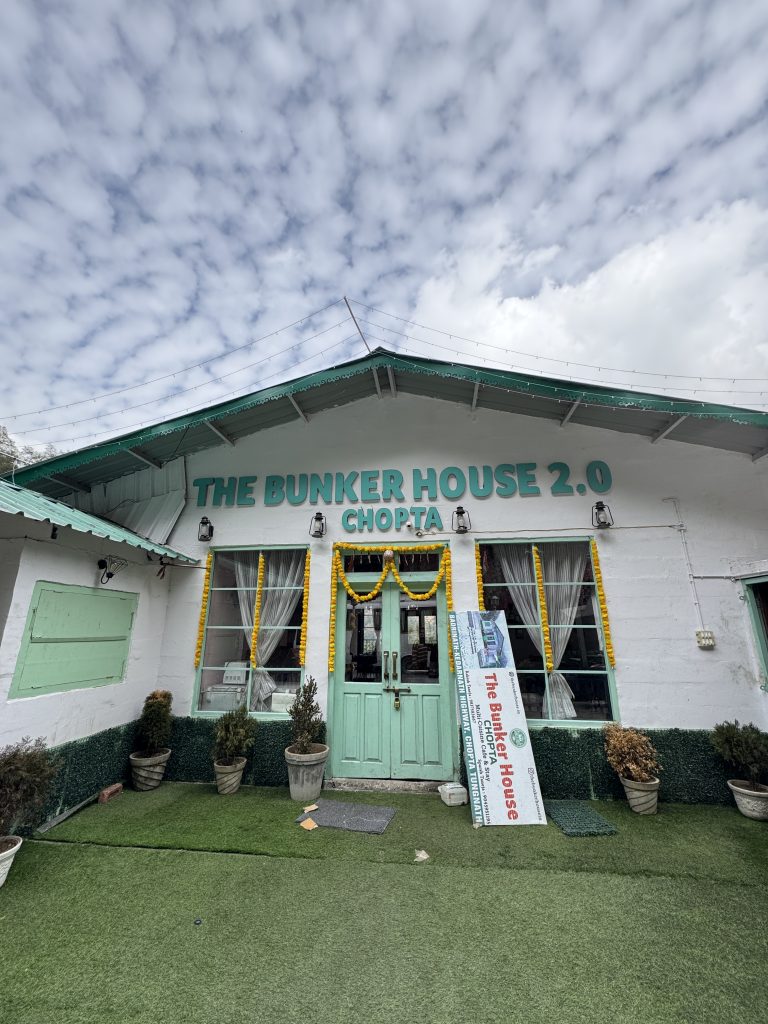
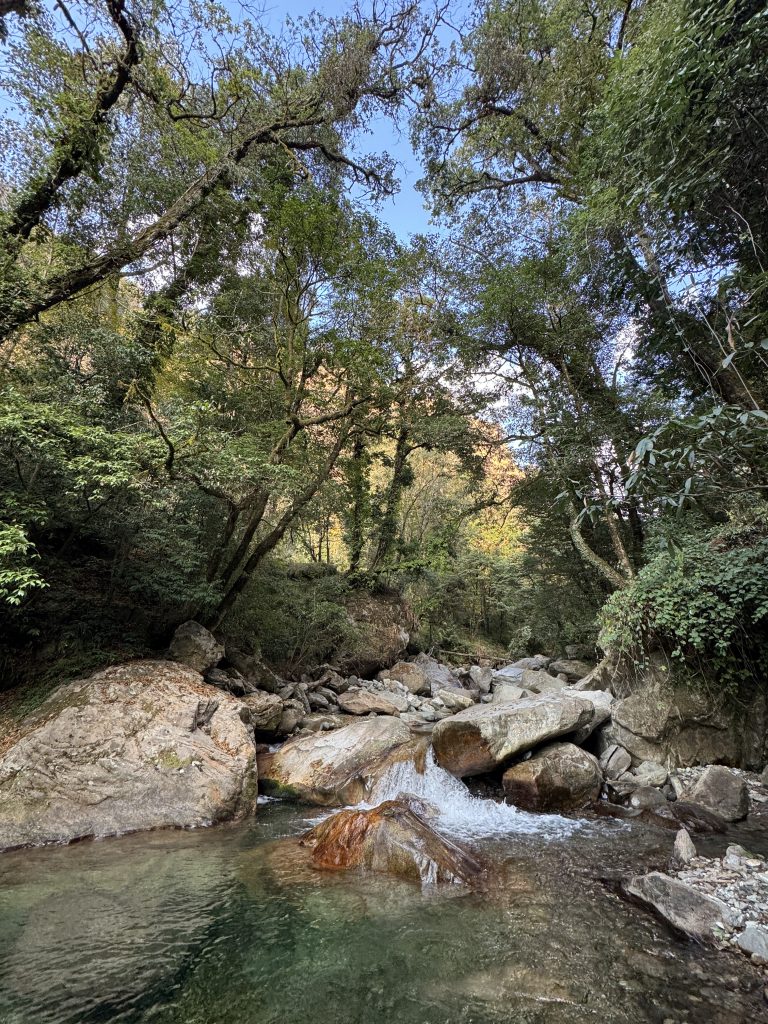
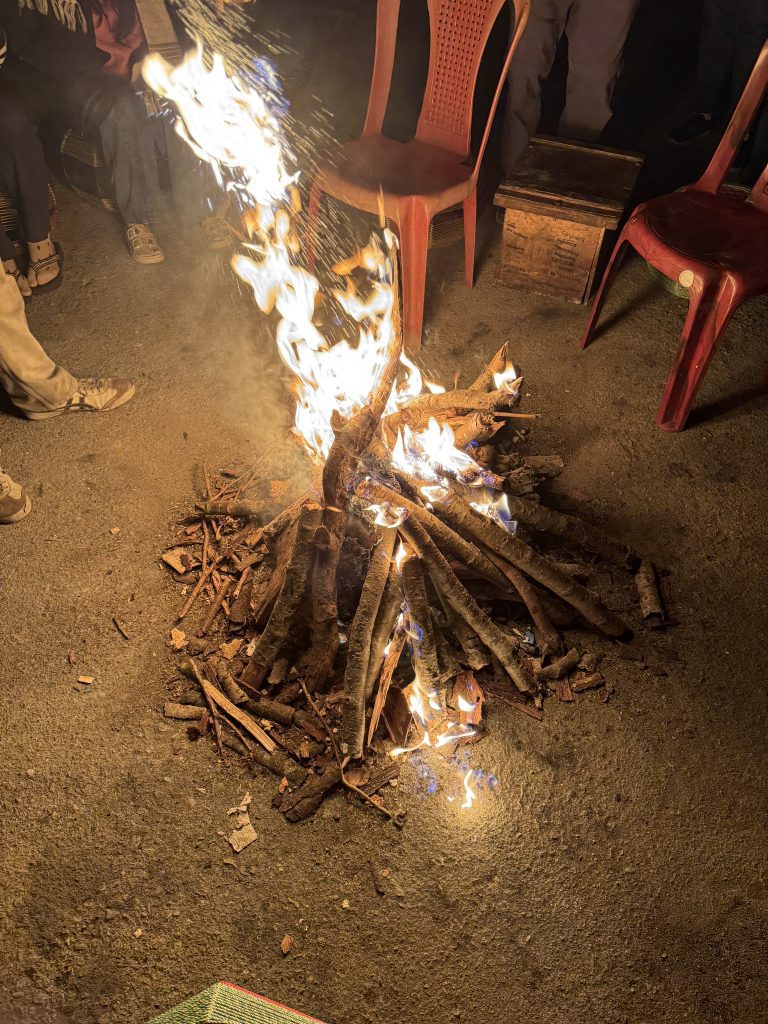
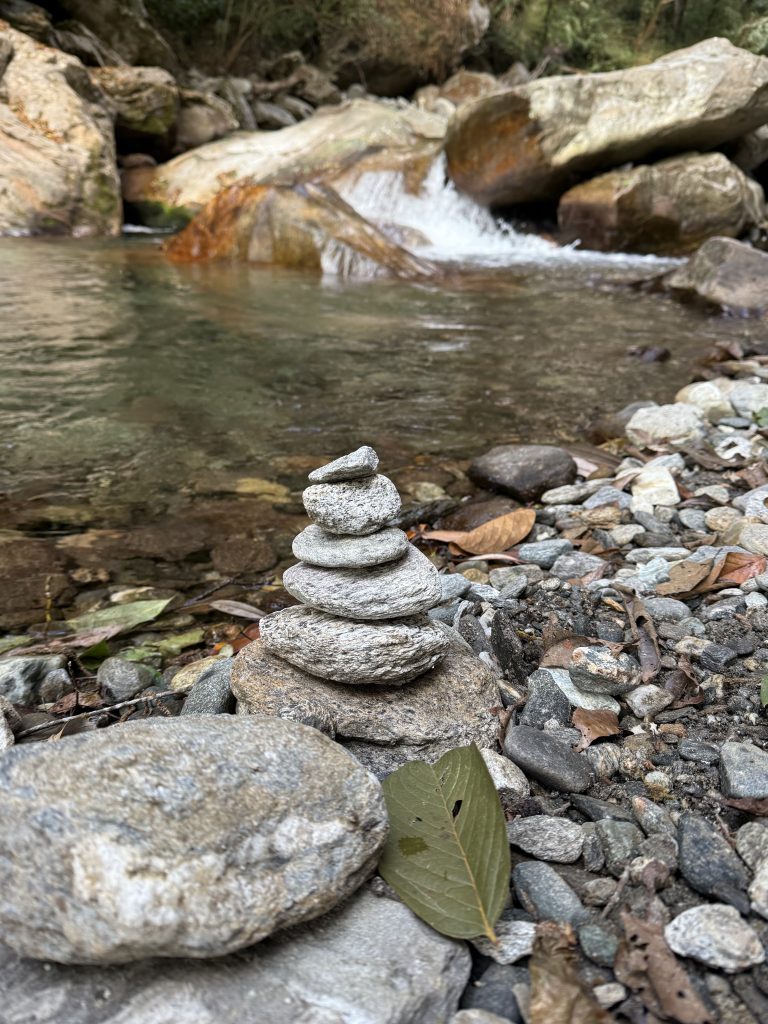
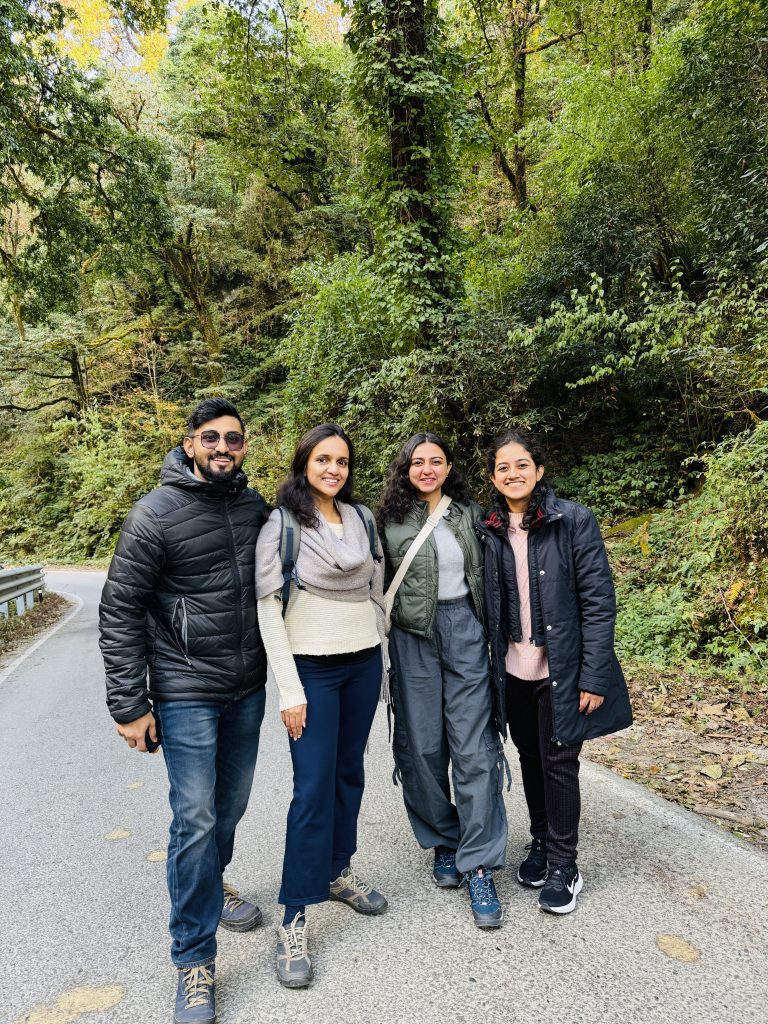
Day 2 – Trekking through Tungnath Temple and Chandrashila Peak
Tungnath Temple – The highest Shiva Temple in the world
The day began with an early wake-up call at 6 AM, and by 9 AM, we were all set for the much-anticipated adventure to Tungnath Temple, a sacred gem nestled in the Chopta hill station of Uttarakhand. The trek’s base point, where vehicles are parked, was just a 30-minute drive from our stay. This spot is your last chance to stock up on essentials like water bottles, snacks, and trekking sticks from the local shops before heading out.
The Tungnath trek is a relatively easy yet moderately challenging 3.5 km ascent on a well-paved path. Shortly after beginning the trek, you’ll encounter a checkpoint where an entry fee of ₹200 per person is collected. The trail winds through the serene beauty of Chopta tungnath, surrounded by lush greenery and awe-inspiring views of the Chopta hill station. Depending on your pace, the trek usually takes about 2–3 hours to complete.
Although the Tungnath Temple was closed during my visit in November (as it remains closed in winter when the deity is moved to Ukhimath), the experience of reaching this sacred site was unforgettable. The temple, believed to be the highest Shiva temple in the world, radiates tranquility and a deep spiritual connection. Even without the temple doors open, the sight of this ancient structure was soul-stirring.
Standing there, soaking in the serene aura of the Tungnath mandir, you can truly understand why this place holds such a significant position in Uttarakhand’s mythology and trekking adventures.
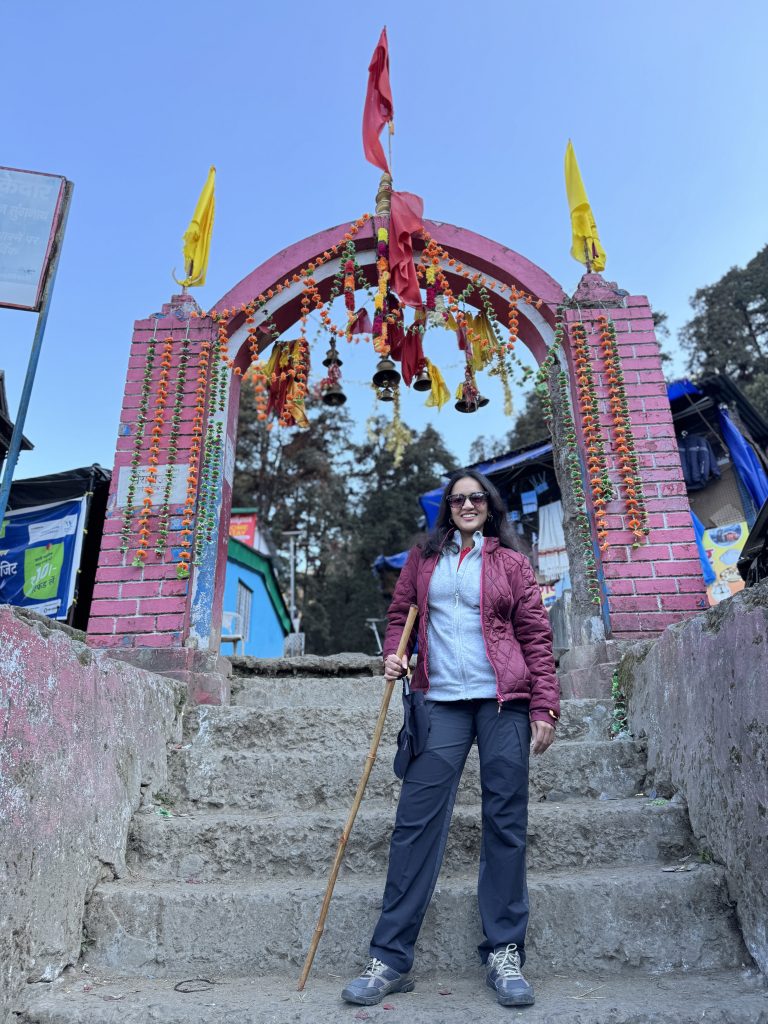
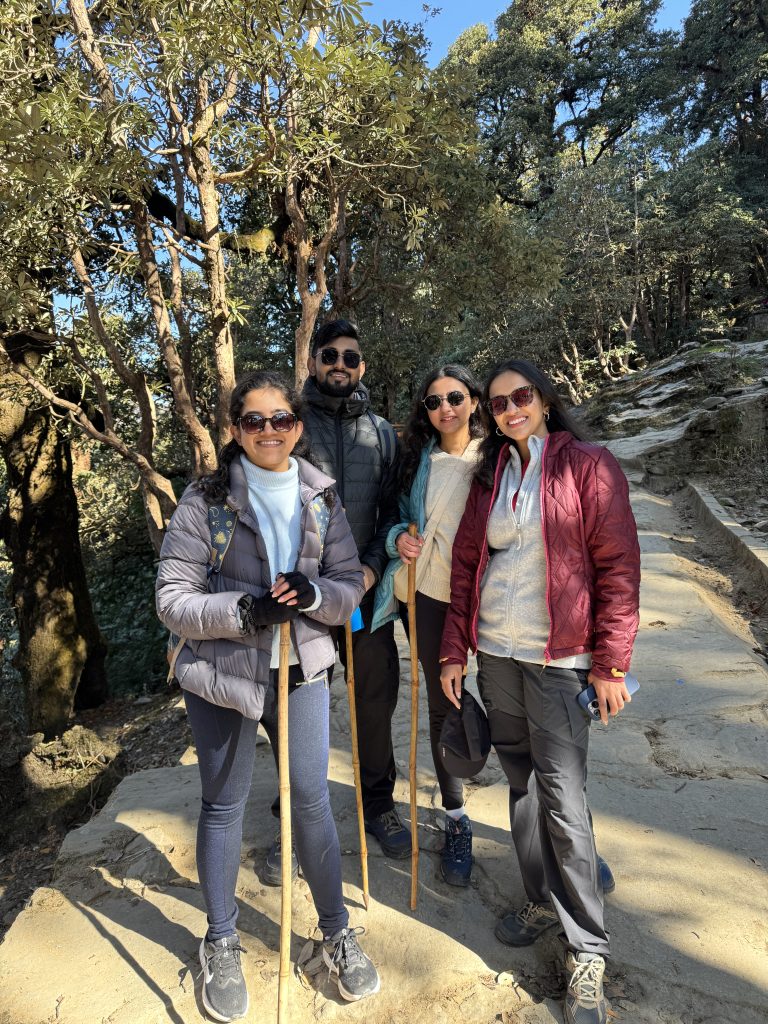
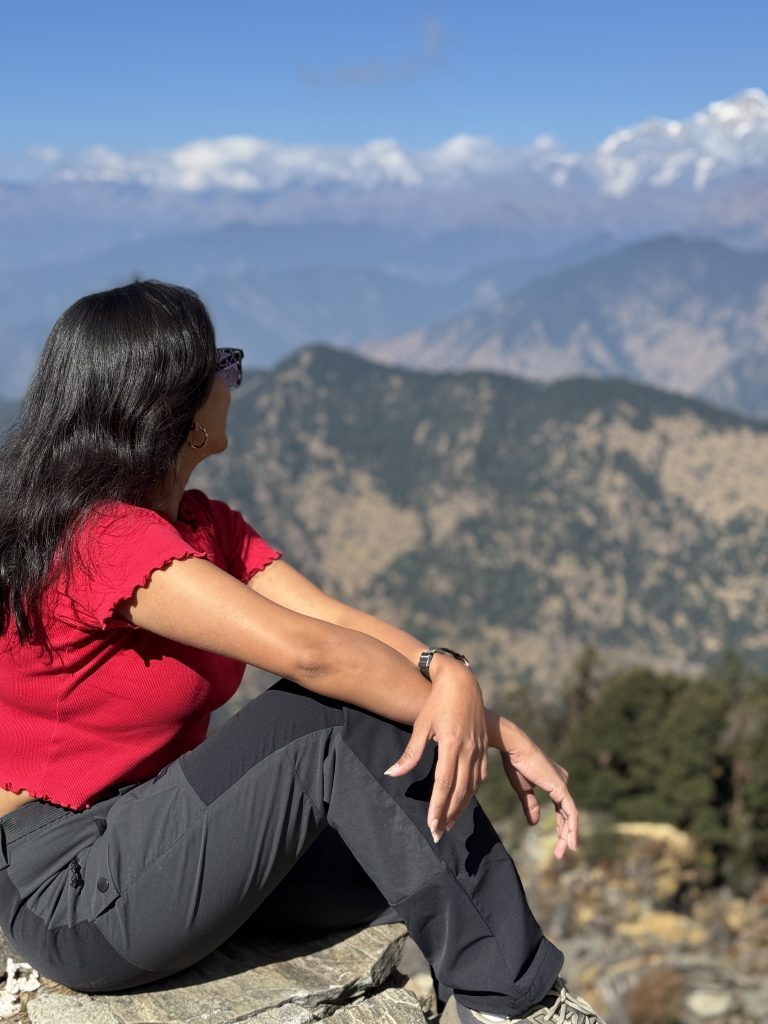
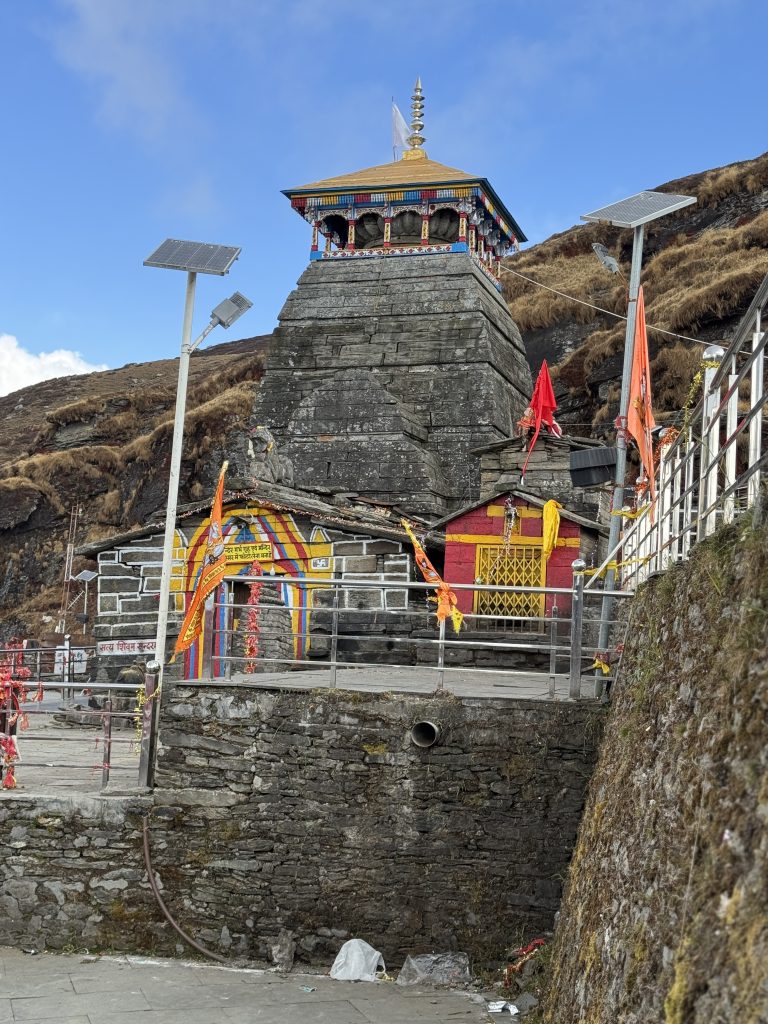
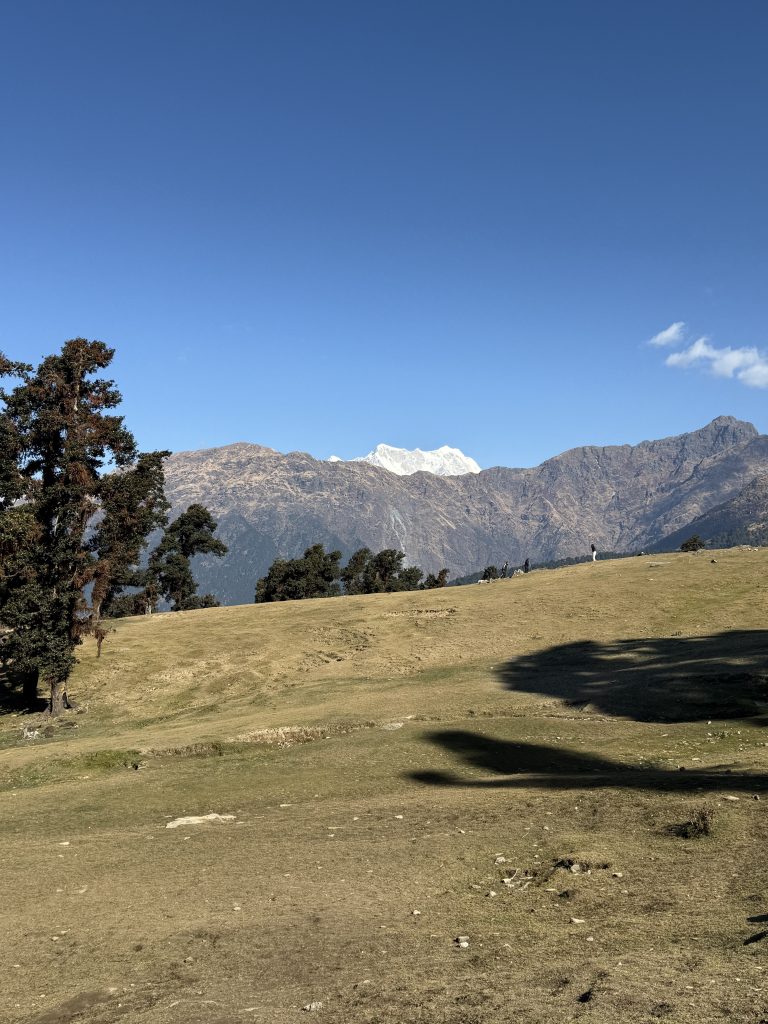
Conquering Chandrashila Peak
After paying our respects outside the Tungnath Temple and savoring our packed lunches amid the serene green meadows, we geared up for the final leg of our adventure: the trek to Chandrashila Peak. This stretch, though just 1 km, is significantly steeper and devoid of paved paths, making it a more challenging yet thrilling climb. Depending on your fitness level, it takes about 45 minutes to an hour to reach the summit.
Standing at an altitude of 3,690 meters (12,110 ft) above sea level, Chandrashila – meaning “Moon Rock” – offers a panoramic 360-degree view of some of the most iconic Himalayan peaks, including Trishul, Nanda Devi, and Chaukhamba. Reaching the top is like stepping into a postcard-perfect scene, where the mighty Himalayas stretch endlessly before you.
The summit isn’t just about the views; it’s also a place of spiritual and emotional connection. We visited the small temple atop the peak to offer our prayers, a tradition for many trekkers and devotees who believe in the sanctity of this place. Standing there, surrounded by the clouds and peaks, we couldn’t help but shout “Har Har Mahadev,” letting the echo reverberate through the mountains.
Of course, no adventure is complete without capturing memories. We spent time clicking pictures, recording videos, and simply soaking in the grandeur of Chandrashila, which is also famed for its jaw-dropping sunset views. As the golden hues of the setting sun lit up the snow-capped peaks, the sight was mesmerizing – a moment that remains etched in my heart.
However, trekkers should note that the descent after sunset can be tricky as it gets darker quickly. A flashlight or headlamp is essential to navigate your way back safely.
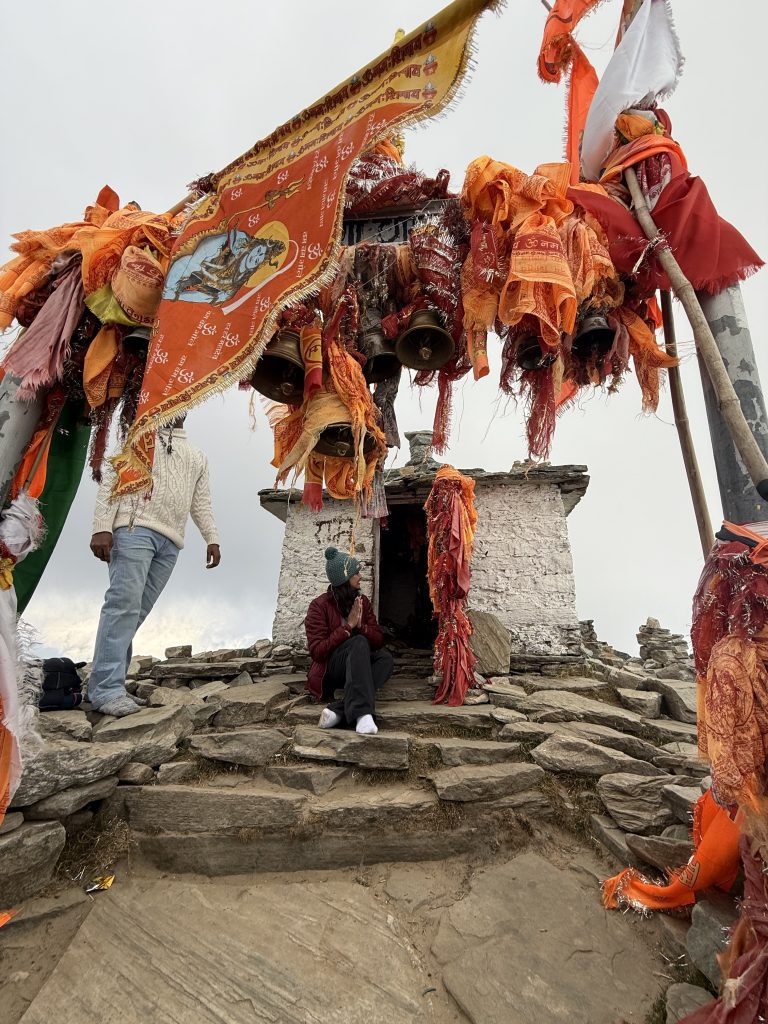
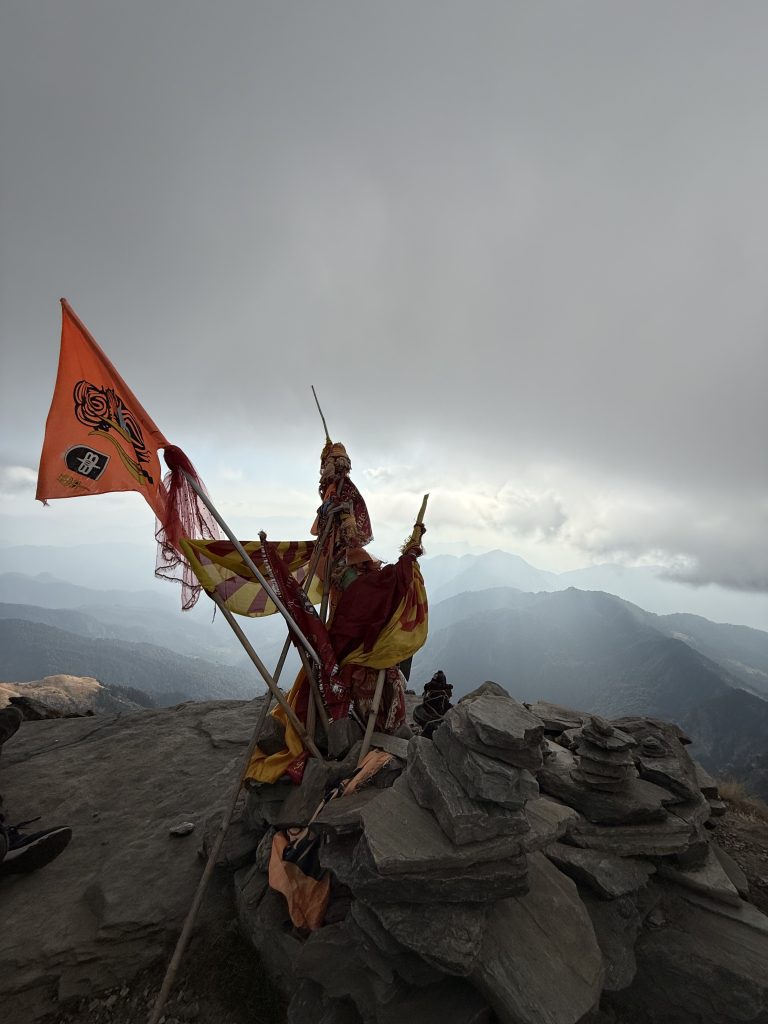
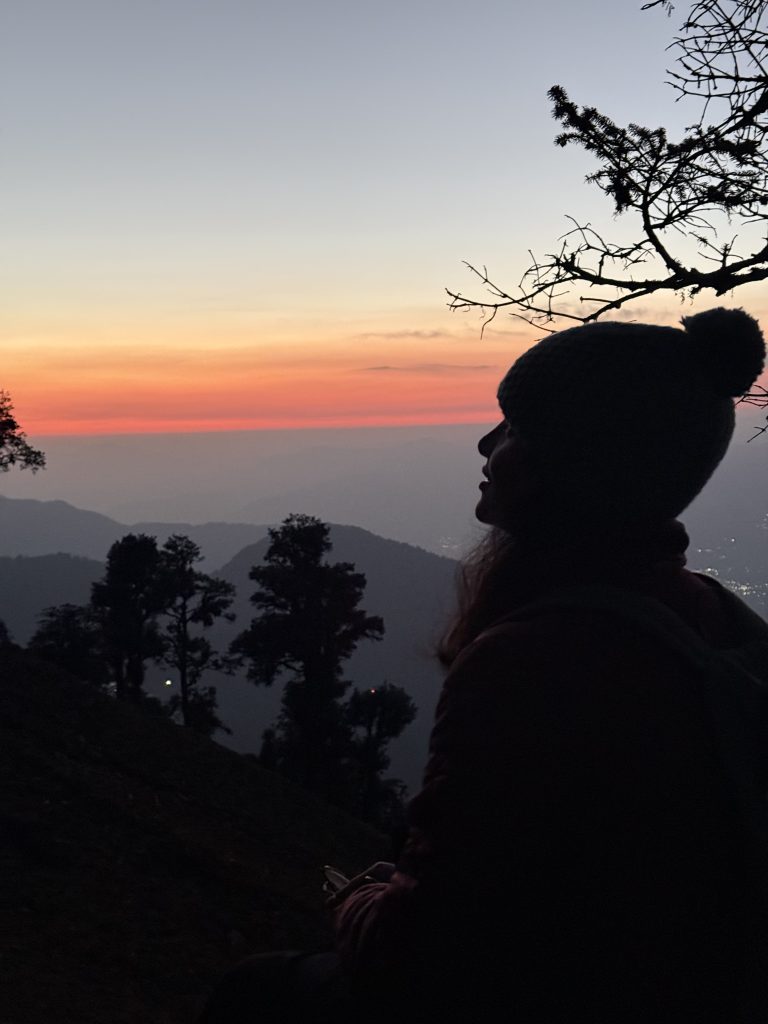
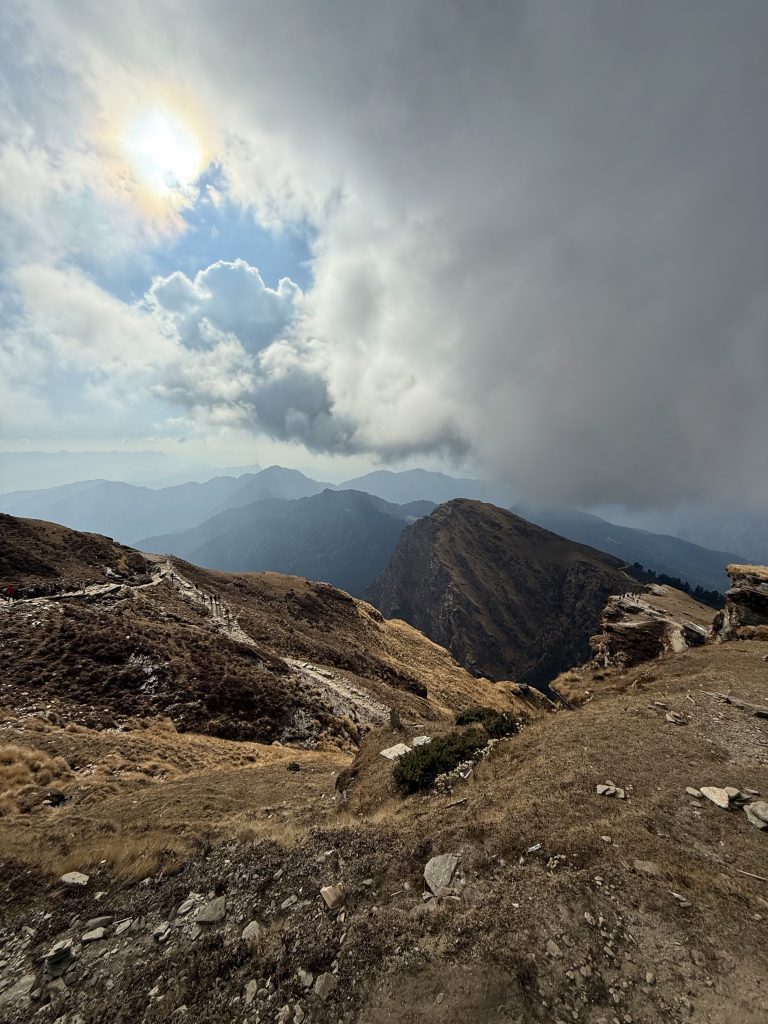
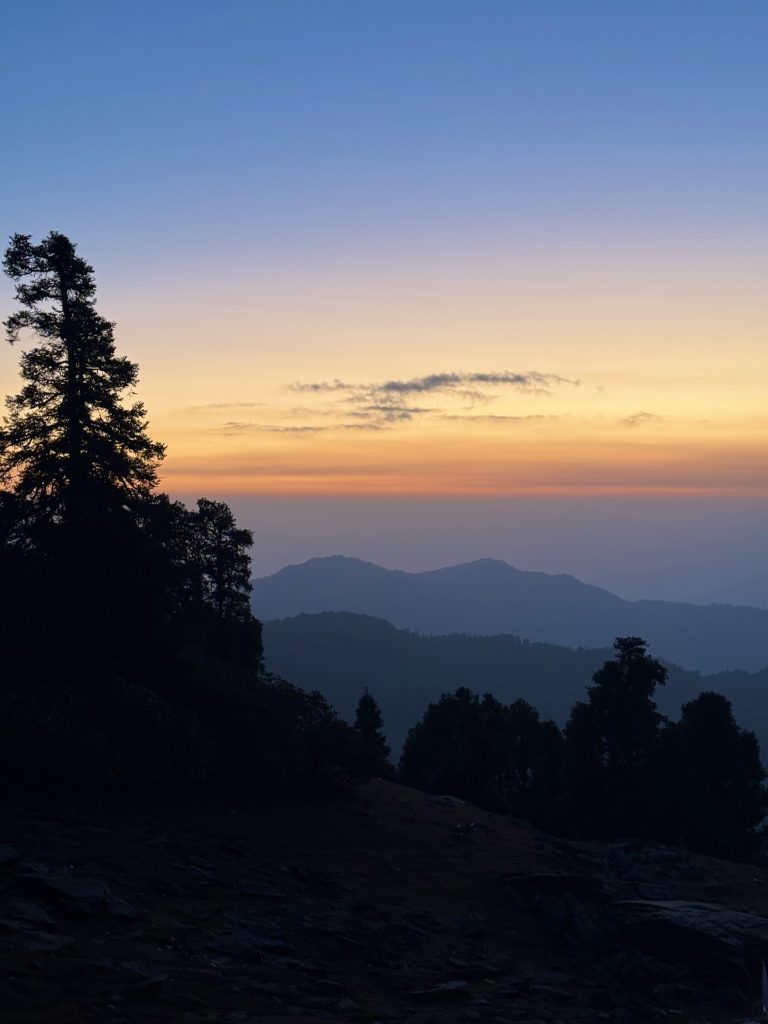
Day 3: Enchanting trails to Deoriatal
After the adrenaline rush of Day 2, Day 3 brought another captivating adventure – the trek to Deoriatal. Deoriatal is a pristine lake nestled at an altitude of about 2,400 meters above sea level. Despite some lingering soreness from the previous day, excitement ran high as we prepared to witness the serene beauty of this Himalayan gem.
The journey began at Sari Village, the base point for the Deoriatal trek. This charming village is perfect for grabbing snacks, renting trekking poles, or fueling up with a quick bite before embarking on the trail. The 2-kilometer trek to Deoriatal is moderately challenging, with a rugged, unpaved path winding through quaint villages, dense rhododendron and oak forests. Depending on your pace and fitness level, the ascent can take anywhere from 2 to 3 hours.
Upon reaching Deoriatal, the reward was unparalleled – the tranquil lake reflected the towering Chaukhamba Peak and other Himalayan giants, creating a picture-perfect scene. The serene surroundings and the crystal-clear waters of the lake offered a moment of peace and connection with nature. We spent time marveling at the stunning views, capturing pictures, and soaking in the ambiance before completing a parikrama of the lake, an experience that heightened the spiritual essence of the place.
This trek to Deoriatal was the perfect conclusion to an awe-inspiring journey. We descended back to Sari Village by 3 PM, enjoyed a hearty lunch at a local eatery, and began our return journey to Delhi, carrying memories of Chopta, Tungnath, Chandrashila, and Deoriatal that will last a lifetime.
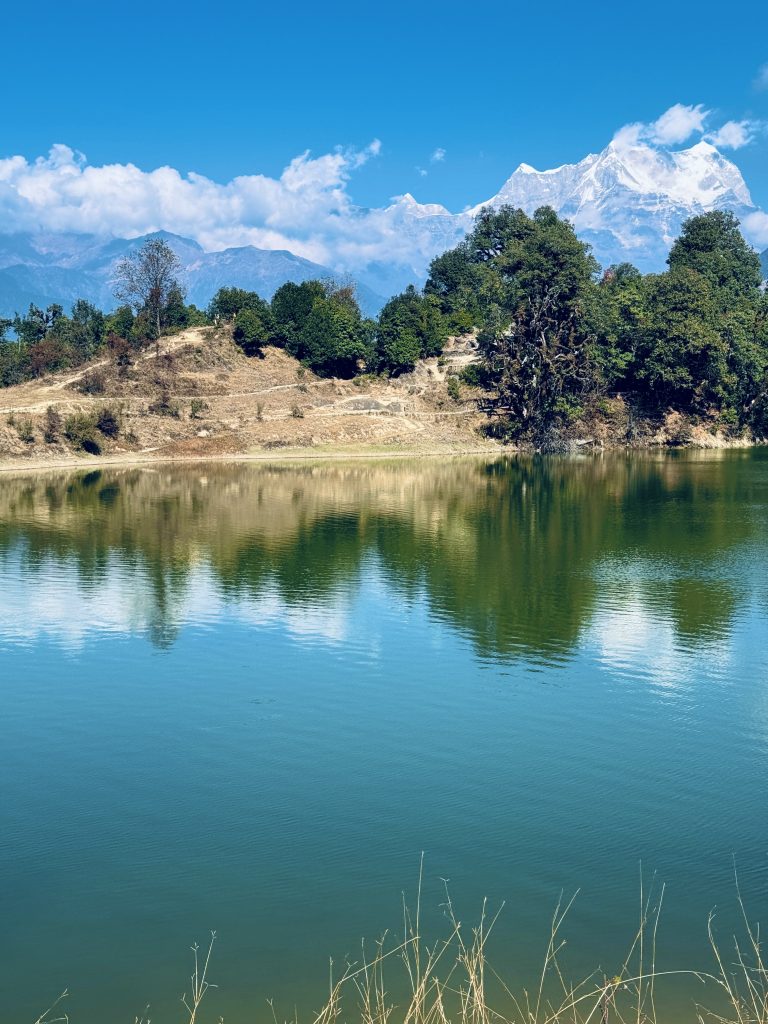
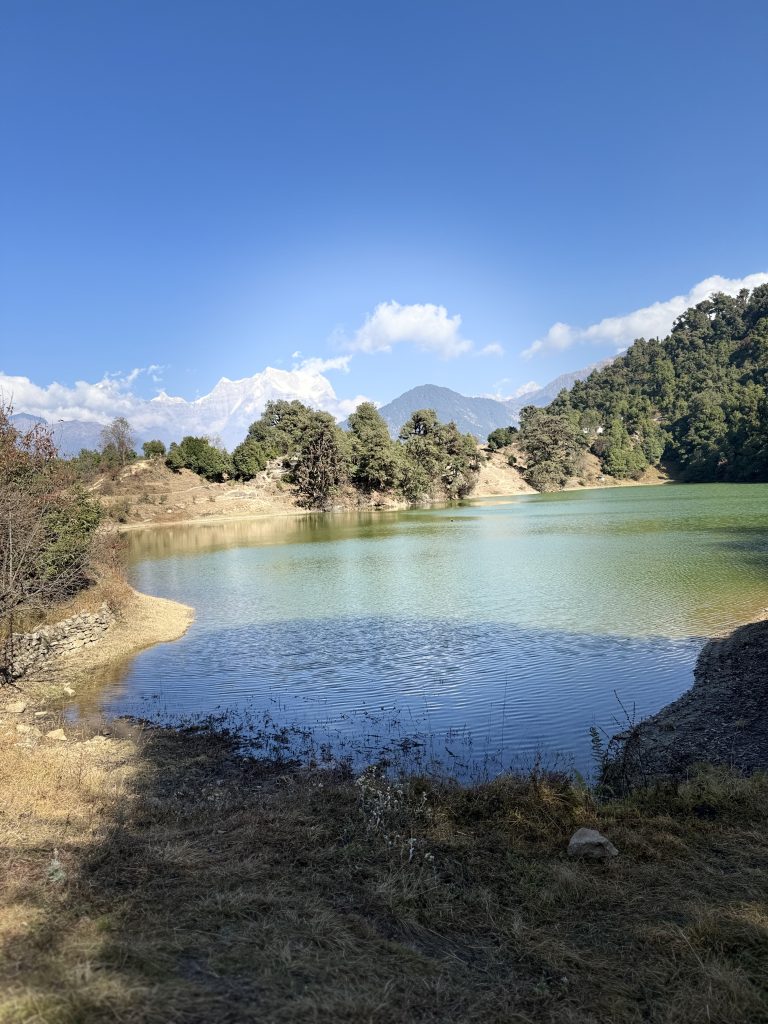
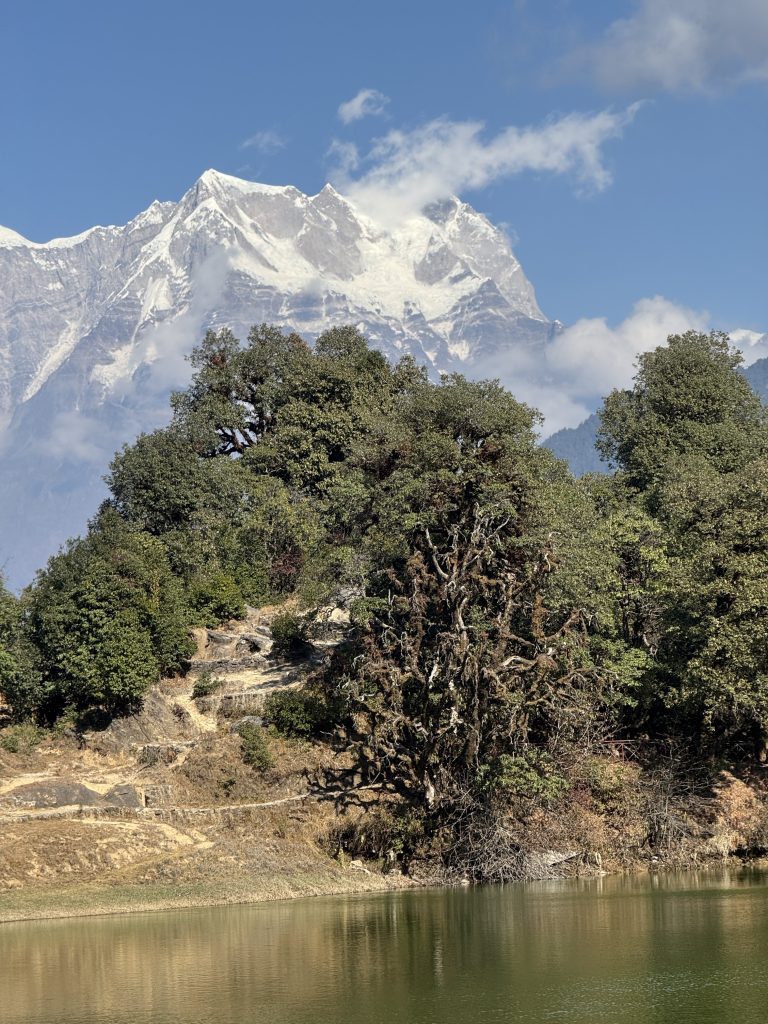
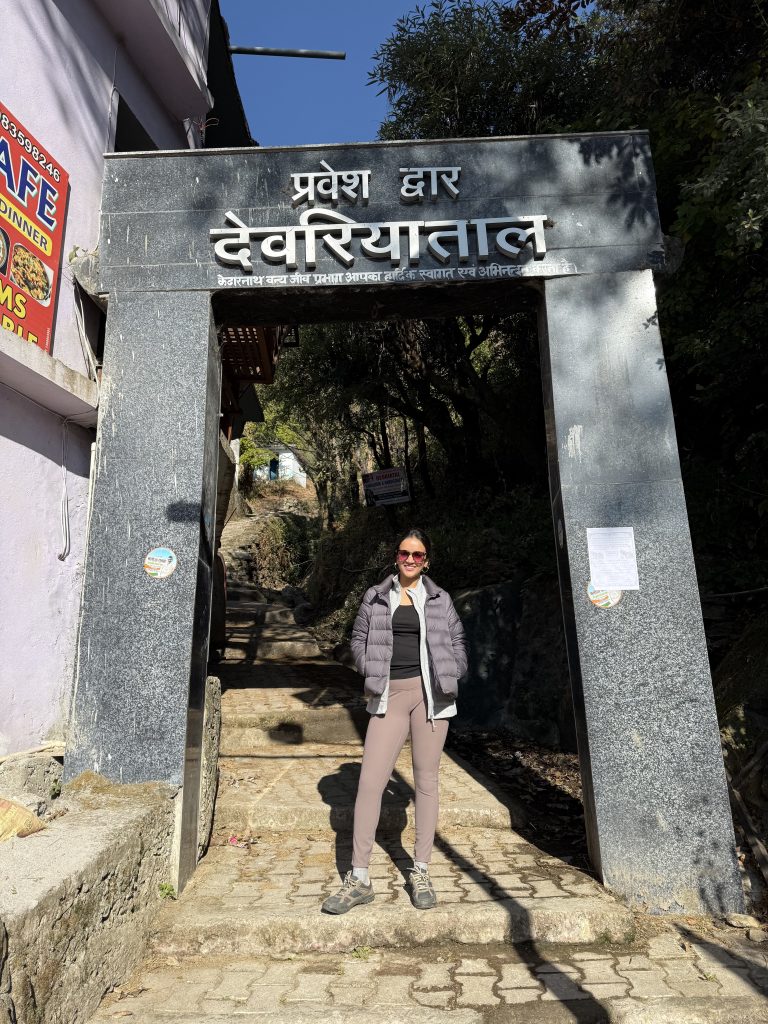
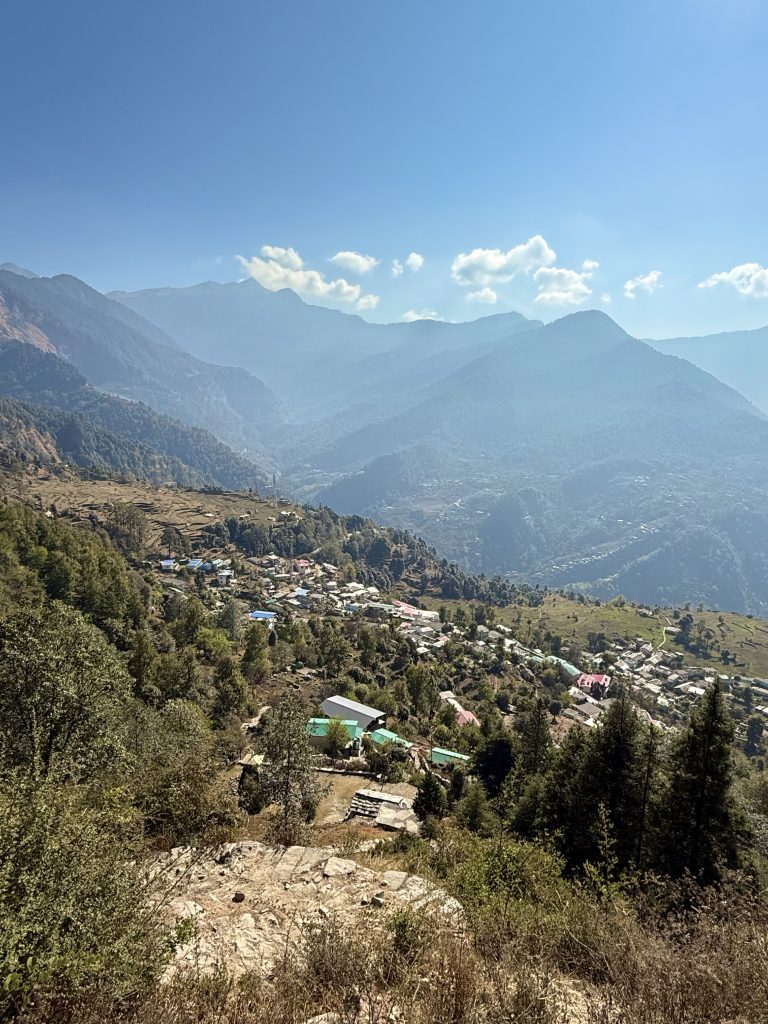
Chopta Trip essentials
- Electricity: Chopta does not have a standard electricity supply. Homestays and accommodations rely entirely on solar power. It is best to charge your devices fully beforehand and carry a power bank at all times.
- Mobile Network: Network connectivity is minimal in Chopta. During my recent visit in November 2024, only Vodafone provided limited connectivity in some areas. Be prepared for a digital detox.
- Lighting: Carry a reliable torch or ensure your phone is sufficiently charged, especially if you plan to trek early in the morning or after dark.
- Facilities at Tungnath: While there is a washroom near Tungnath Temple, it is not well-maintained. Plan accordingly to avoid inconvenience.
- Stay Near the Temple: If you book accommodation close to Tungnath, you’ll have the unique opportunity to trek to Chandrashila Peak for a breathtaking sunrise
Wrapping up the journey
Chopta, with its untouched natural beauty and spiritual charm, is a destination that leaves an indelible mark on your soul. Whether it’s the serene Tungnath Temple, the awe-inspiring views from Chandrashila Peak, or the tranquility of Deoriatal, each moment in Chopta is a celebration of nature and self-discovery. This trip was more than just a journey through Uttarakhand; it was an experience of connection—with nature, the divine, and oneself. Until the next adventure, Chopta remains a treasure trove of memories and inspiration.



